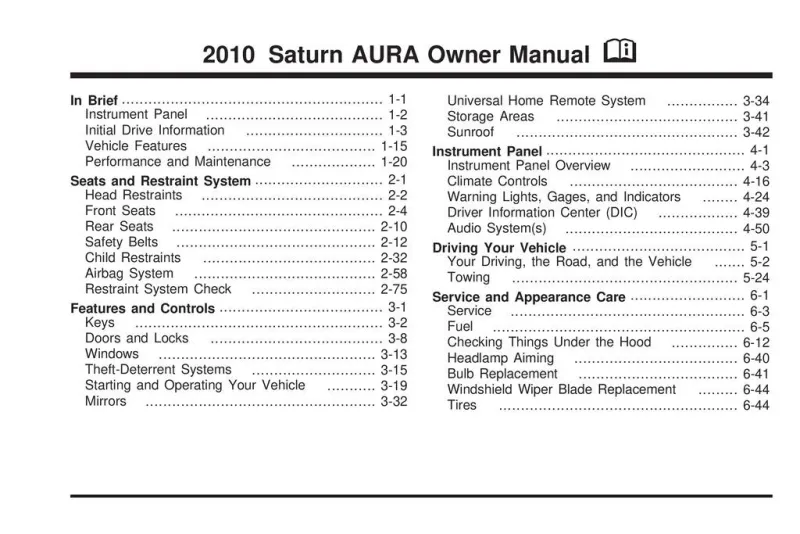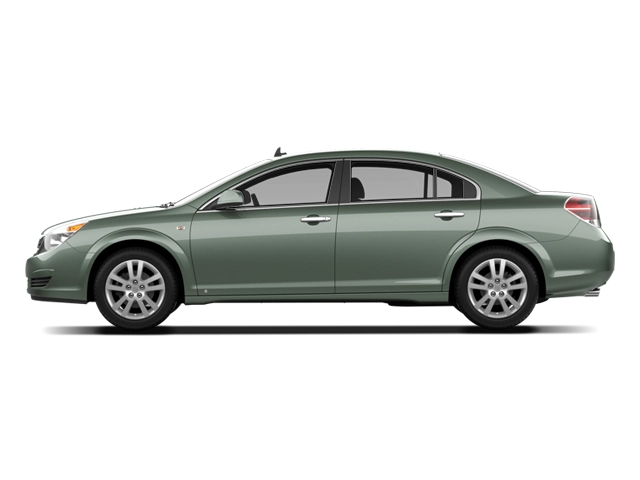2010 Saturn Aura Owner's Manual

Table of Contents
2010 Saturn Aura Overview
Introduction
The 2010 Saturn Aura stands out in the mid-size sedan market, offering a blend of comfort, style, and practicality. With its sleek design and well-appointed interior, the Aura appeals to those seeking a reliable family vehicle or a daily commuter with both flair and functionality. This model year showcases Saturn's commitment to quality and innovation, making it a noteworthy choice in its segment.
Powertrains
The 2010 Saturn Aura offers two capable powertrains to cater to a range of driving preferences. The standard 2.4-liter four-cylinder engine generates a smooth 164 horsepower, providing a balanced mix of power and fuel efficiency. For those desiring a sportier ride, the available 3.6-liter V6 engine delivers an impressive 252 horsepower, ensuring a lively performance. Both engines are paired with a smooth six-speed automatic transmission, offering responsive handling and a confident driving experience.
Trims
Features
Throughout its various trims, the 2010 Saturn Aura is packed with features designed to enhance comfort and convenience. Standard equipment includes keyless entry, dual-zone climate control, and a robust audio system with available Bluetooth connectivity. For added safety, advanced options like traction control and side curtain airbags make the Aura a secure ride for drivers and passengers alike.
Owner's Manual
The owner's manual for the 2010 Saturn Aura serves as an essential guide for owners, providing detailed instructions on vehicle operation, maintenance schedules, and warranty coverage. It also includes troubleshooting tips for common issues, ensuring that drivers can maximize their experience while maintaining the vehicle in top condition.
User manual download
The Saturn Aura owner manual for the 2010 model year is to be found in PDF downloadable format on this page. The owner manual for the model year 2010 is free and in English, but the repair manuals are usually not easy to get and may cost more.
Manual Questions
Fill the form below and someone will help you!

